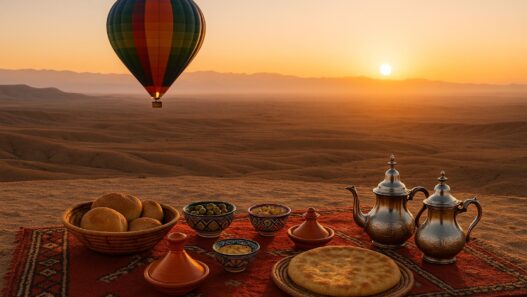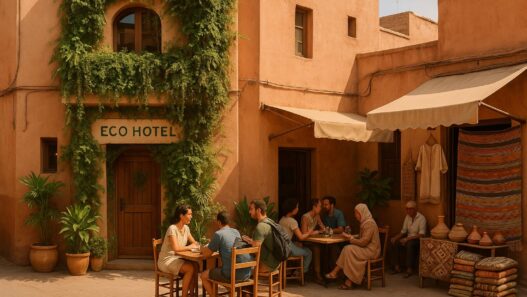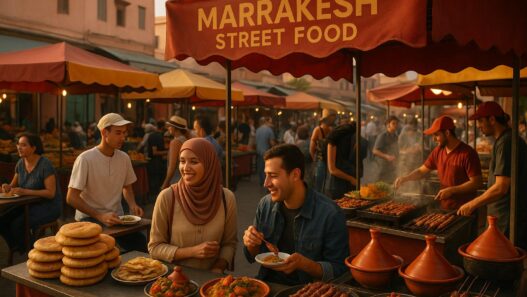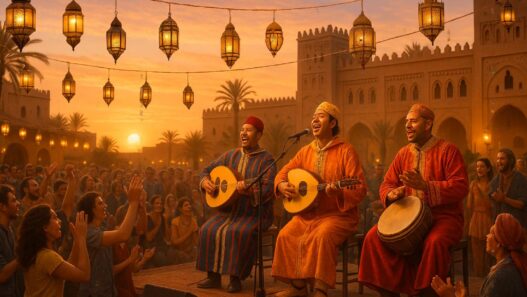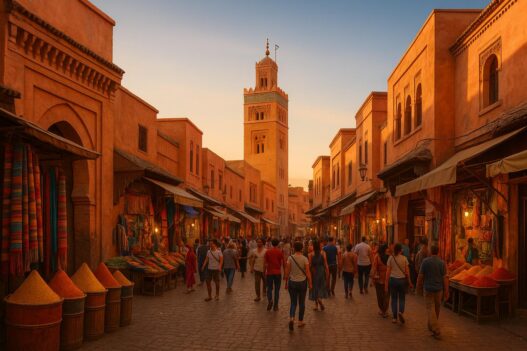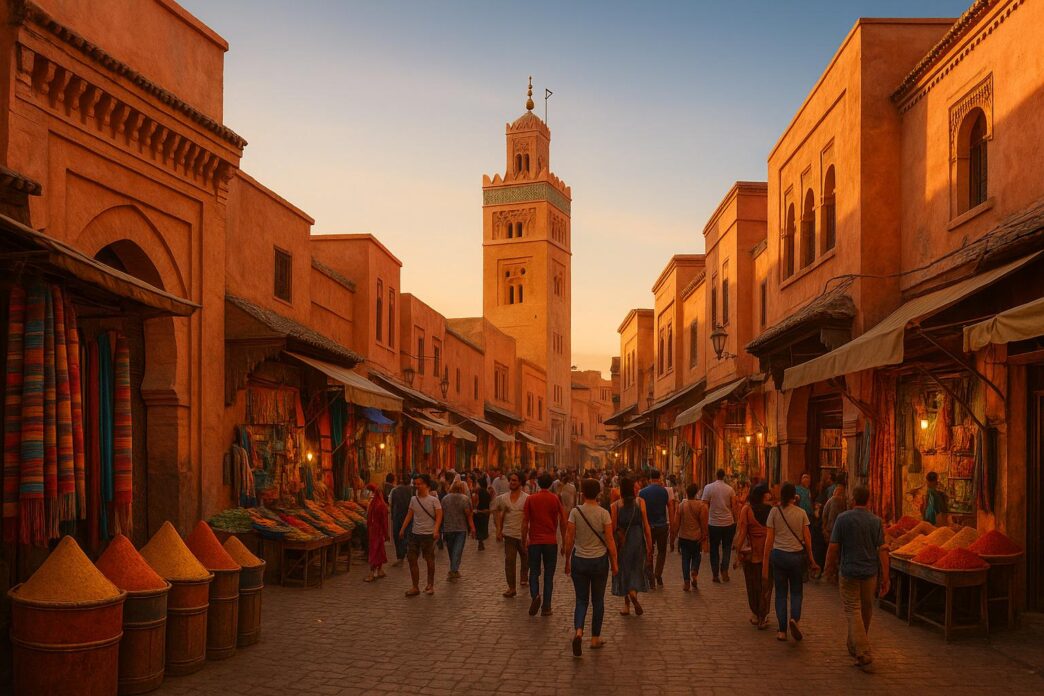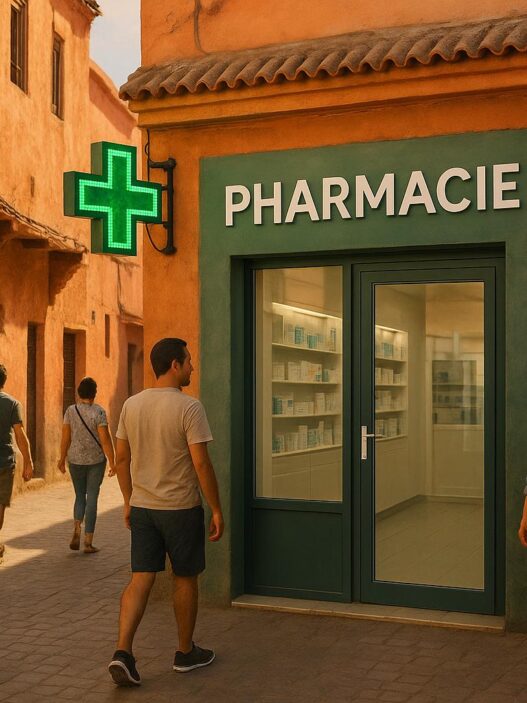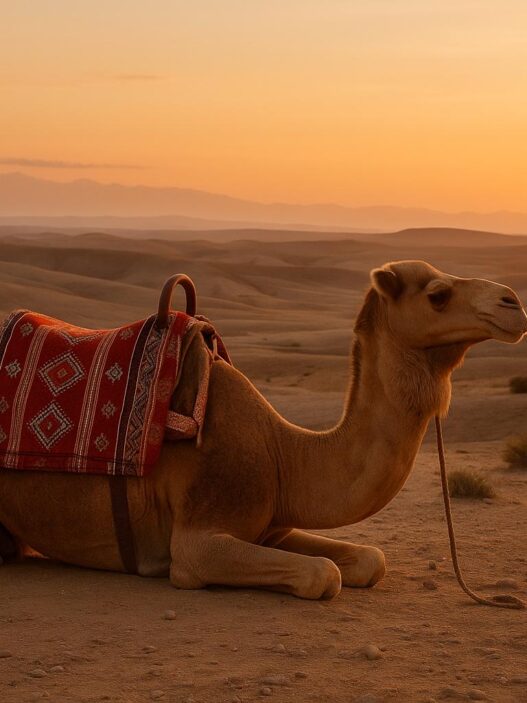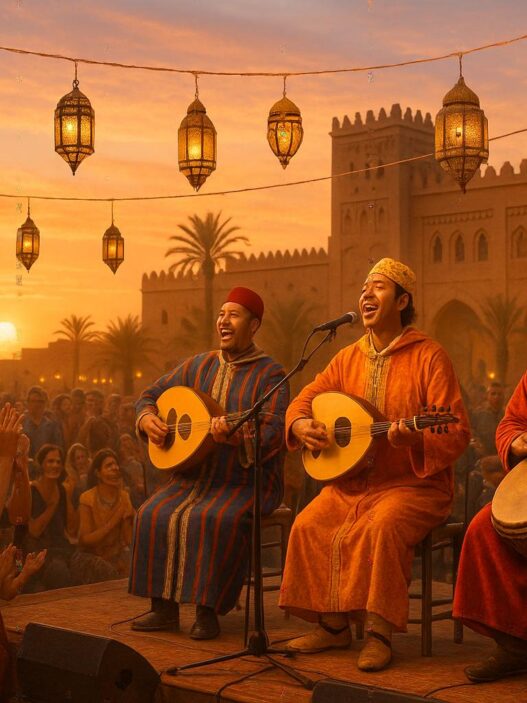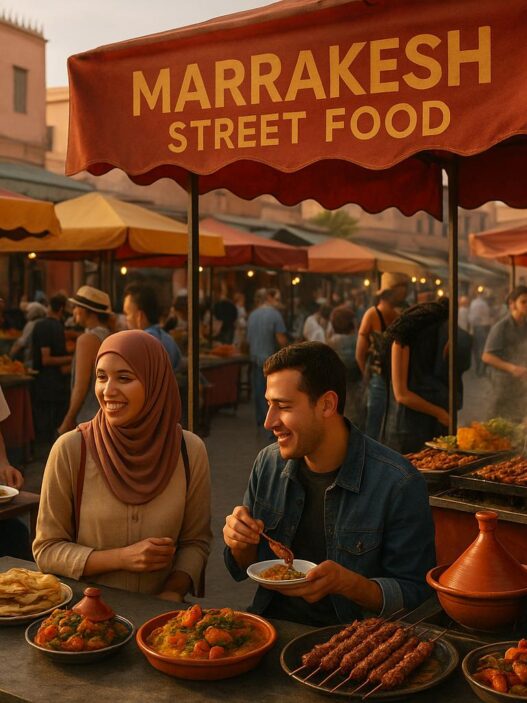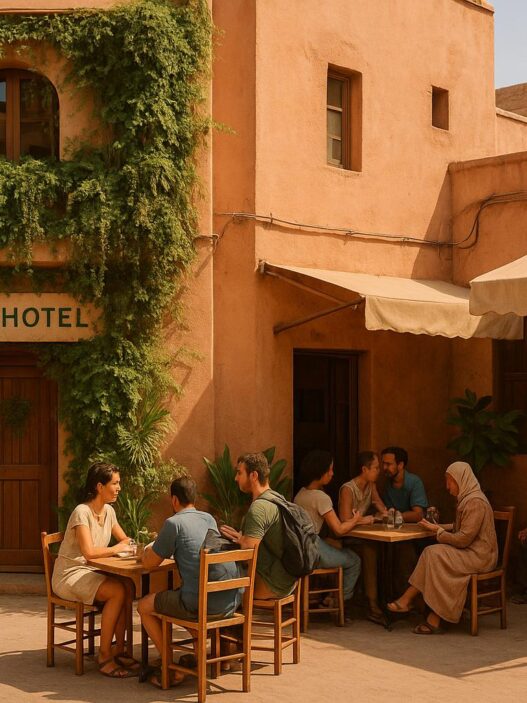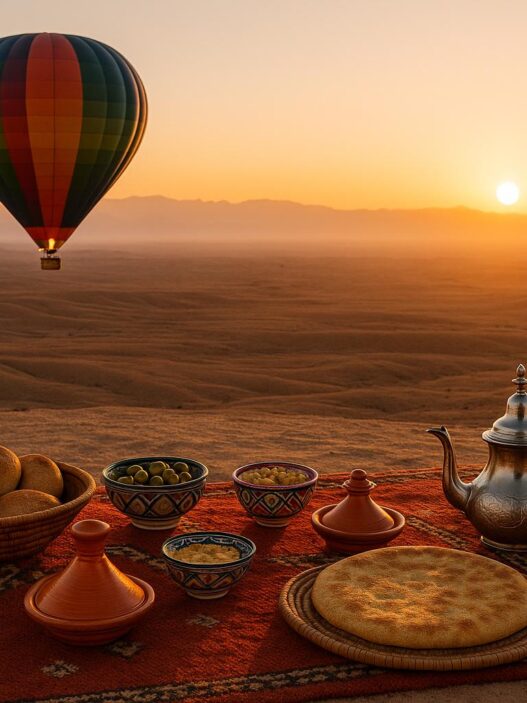Marrakesh’s Medina, a historic area established in 1070–1072, earned its UNESCO World Heritage status in 1985 for its incredible blend of architecture, history, and living traditions. Spanning 700 hectares and surrounded by 12 miles of ochre-colored walls, the Medina is a vibrant hub of life, featuring landmarks like the Koutoubia Mosque, Saadian Tombs, and Jemaa el-Fnaa square. Its influence extends across North Africa and Andalusia, showcasing centuries of urban and cultural evolution.
Key Highlights:
- Historical Significance: Founded by the Almoravids, it became a center of politics, economy, and arts.
- Architectural Marvels: Includes the Koutoubia Mosque, Bahia Palace, and Saadian Tombs.
- Cultural Hub: Jemaa el-Fnaa square, a UNESCO Intangible Heritage site, hosts daily performances and markets.
- Craftsmanship: Home to souks where artisans preserve centuries-old skills.
- Preservation Efforts: Post-2023 earthquake restoration and sustainable development projects aim to protect its legacy.
The Medina remains a living, dynamic space where history and modern life coexist, making it a must-visit destination for anyone interested in history, architecture, and local traditions.
Historical Background and Architecture
Key Historical Periods
Marrakesh’s Medina owes its rich history to five influential dynasties, each leaving a distinct mark on the city. The Almoravids (1070–1072) established Marrakesh as a strategic capital, introducing advanced irrigation systems that transformed the region.
The Almohads took over in 1147, reshaping the city by replacing Almoravid mosques with monumental structures, including the renowned Koutoubia Mosque.
In 1269, the Marinids shifted the capital to Fez after capturing Marrakesh, leading to a period of decline. The city’s fortunes revived under the Saadians in 1524, who restored its splendor with architectural gems like the Saadian Tombs, celebrated for their Moroccan-Moorish artistry.
Lastly, the Alawi dynasty seized Marrakesh in 1669, using it primarily as a military post while their rulers resided elsewhere.
This layered history is reflected in the Medina’s iconic structures, each bearing the legacy of its era.
Major Monuments and Buildings
The Medina of Marrakesh is a treasure trove of architectural marvels that span centuries. The Koutoubia Mosque, with its towering 253-foot (77-meter) minaret, stands as both a spiritual landmark and a masterpiece of design, influencing structures in Seville and Rabat.
UNESCO describes the city’s architectural richness:
"Marrakesh contains an impressive number of masterpieces of architecture and art (ramparts and monumental gates, Koutoubia Mosque, Saâdians tombs, ruins of the Badiâ Palace, Bahia Palace, Ménara water feature and pavilion) each one of which could justify, alone, a recognition of Outstanding Universal Value." – UNESCO
The Ben Youssef Madrasa, built by the Saadians, highlights their dedication to Islamic education and intricate design. The Saadian Tombs, dating back to the 16th century, showcase stunning decorative elements like marble work and geometric patterns. The Bahia Palace and the ruins of the Badiâ Palace tell stories of royal ambition, while the Medina’s distinctive ochre-colored walls, stretching about 12 miles (19 kilometers), have safeguarded the city for nearly a millennium.
Architectural Styles and Building Methods
Each dynasty brought its own innovations to Marrakesh’s evolving architectural landscape. The Almoravids introduced muqarnas, intricate honeycomb-like carvings, and incorporated design elements from al-Andalus, as seen in the Almoravid Qubba.
The Almohads set lasting standards for mosque design with the Koutoubia Mosque, while monumental gateways like Bab Agnaou became defining decorative features.
The Marinids elevated decorative arts, mastering the use of zellij – mosaic tiles arranged in intricate geometric patterns – and enhancing wood and stucco craftsmanship. Their madrasas, with elaborate courtyards, stand as testaments to their artistry.
The Saadians refined the Moroccan-Moorish style, blending traditional techniques with creative designs. Structures like the Ben Youssef Madrasa and Saadian Tombs reveal their ability to transform simple materials into stunning works of art through geometric patterns, calligraphy, and tilework.
The Alawis continued this legacy, restoring and building mosques and palaces that preserved the essence of Moroccan architecture. Marrakesh’s Medina, shaped by centuries of political and artistic evolution, remains a living testament to the ingenuity and craftsmanship of North African Islamic architecture.
Cultural and Social Role
Jemaa el-Fnaa: The Heart of the Medina
At the heart of Marrakesh’s Medina lies Jemaa el-Fnaa, a historic square that has been bustling with life since the 11th century. This iconic space is much more than a tourist hotspot – it’s the beating heart of Moroccan culture and a symbol of the Medina’s enduring social and cultural role.
In 2008, UNESCO acknowledged its cultural significance by designating Jemaa el-Fnaa as part of the intangible cultural heritage of humanity. As UNESCO describes:
"The Jemaa el-Fna Square is one of the main cultural spaces in Marrakesh and has become one of the symbols of the city since its foundation in the eleventh century. It represents a unique concentration of popular Moroccan cultural traditions performed through musical, religious and artistic expressions."
The square transforms as the day unfolds. By daylight, it’s alive with snake charmers, henna artists, and vendors selling traditional remedies. As night falls, the atmosphere shifts to a lively showcase of storytellers, Berber musicians, and Gnaoua dancers, keeping centuries-old traditions alive.
However, preserving this vibrant heritage isn’t without its challenges. Hanae Jerjou, curator of the Museum of Intangible Cultural Heritage Jemaa el-Fnaa, which opened in 2023, highlights these concerns:
"Society is developing fast and there are worries about the intangible cultural heritage."
To address this, international efforts have been initiated. In November 2024, a Knowledge Exchange Programme brought together Dutch and Moroccan cultural experts to collaborate on preservation strategies. This partnership, led by DutchCulture, the Reinwardt Academy, and Morocco’s Fondation Nationale des Musées, aimed to document the square’s unique traditions and personalities.
Such efforts underscore the importance of safeguarding Jemaa el-Fnaa as a living cultural treasure.
Crafts, Souks, and Daily Life
The Medina’s souks are more than just bustling markets – they’re vital cultural spaces that have preserved traditional crafts for centuries. Dating back to the 11th century, these markets are like open-air museums where artisans continue to practice their crafts amidst the influence of modernity.
The souks are organized by craft type, a system rooted in Morocco’s historical guild traditions. Skills are passed down through generations, ensuring that techniques remain intact. For example, Souk Smata is famous for its handcrafted Moroccan footwear, especially the pointed-toe leather slippers known as babouches. Souk Chouari showcases intricate woodworking, while Souk Kimakhine plays a key role in preserving Morocco’s musical heritage through the crafting of instruments.
These markets not only sustain traditional craftsmanship but also maintain a level of quality and authenticity that mass production cannot replicate. Today, modern Moroccan designers are gaining international recognition by blending these traditional techniques with contemporary styles, ensuring that these crafts remain relevant in today’s world.
Beyond commerce, the souks are social hubs where people gather to share news and form connections. As one observer notes:
"Moroccan souks began as small gatherings outside city areas where merchants would come to sell their goods."
Over time, these gatherings evolved into vibrant marketplaces that continue to merge rural traditions with urban life.
Influence on North African and Andalusian Culture
The Medina’s influence stretches far beyond its walls, shaping the cultural and architectural identity of the broader region. Marrakesh has been a cultural powerhouse of the western Muslim world for nearly a millennium. UNESCO highlights this legacy:
"Marrakesh was, for a long time, a major political, economic and cultural centre of the western Muslim world, reigning in North Africa and Andalusia."
This influence began with the Almoravids, whose empire extended from Senegal to Spain, with Marrakesh as their capital. The city’s architectural and urban innovations spread across their territories, giving rise to the Moroccan-Andalusian aesthetic that influenced cities throughout North Africa and southern Spain.
Marrakesh’s urban design even inspired the layout of Fès Jedid in Fez. Jemaa el-Fnaa itself originated as a public square outside the Almoravid palace gates, with souks developing between the square and the main mosque – a layout that became a model for other Islamic cities.
The Medina’s architecture blends Andalusian, Saharan, and West African styles, creating a unique aesthetic that has shaped building techniques and decorative arts across the region. This fusion reflects Marrakesh’s role as a crossroads where diverse traditions converged and flourished.
Beyond architecture, the city’s cultural influence extends to music, literature, and religious practices. Traditions like Gnaoua music and storytelling, celebrated in Jemaa el-Fnaa, have echoed across North Africa, leaving a lasting imprint on cultural practices in areas historically tied to Marrakesh.
This enduring influence is a testament to why UNESCO recognizes the Medina as a site of universal cultural importance.
Preservation Efforts and Challenges
UNESCO‘s Criteria and Universal Value
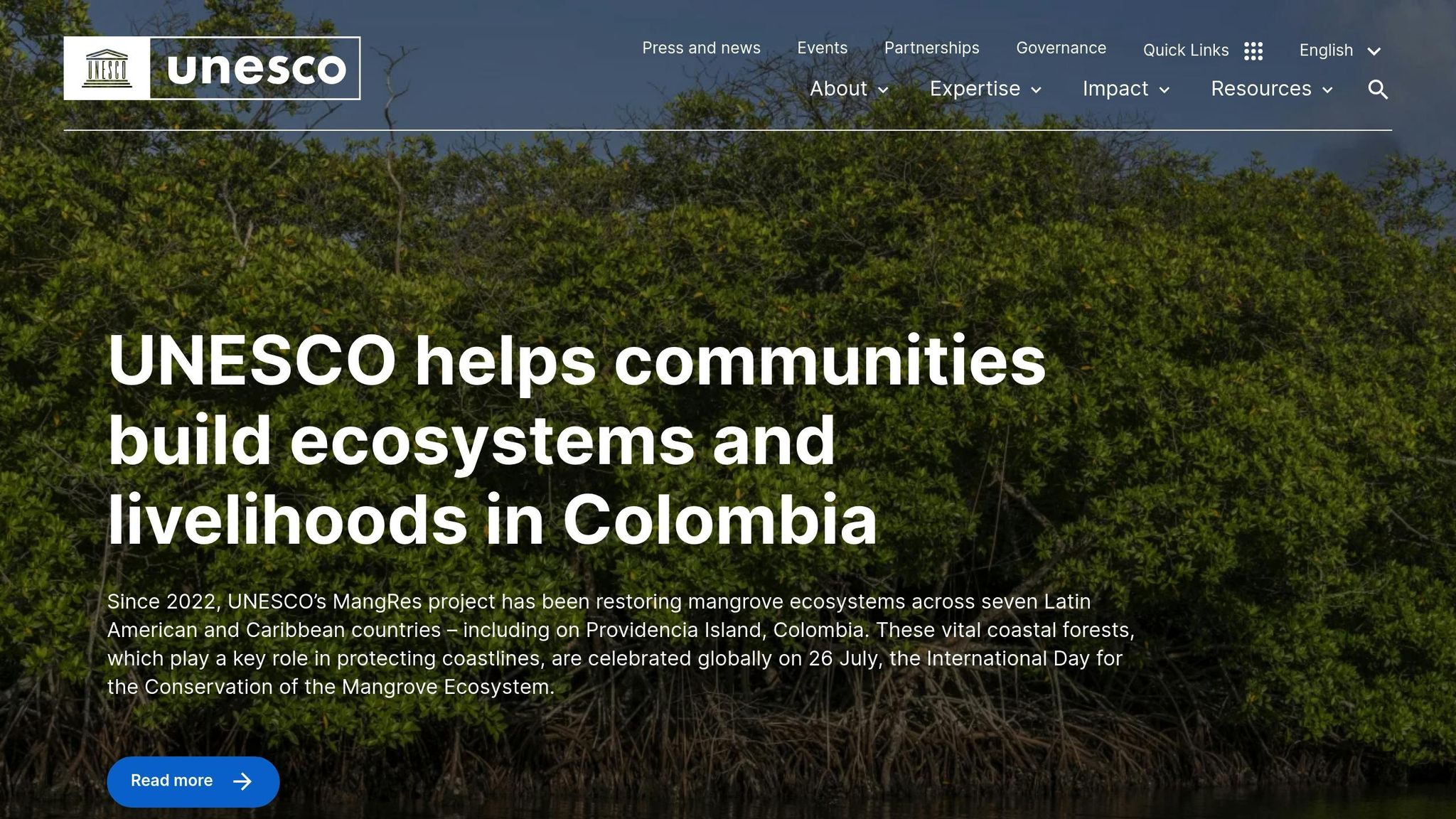
Marrakesh’s Medina was granted UNESCO World Heritage status in 1985, recognized under cultural criteria (i), (ii), (iv), and (v), which highlight its importance on a global scale. According to UNESCO, a site with Outstanding Universal Value is defined as:
"Outstanding Universal Value means that a site has cultural and/or natural significance which is so exceptional that it transcends national boundaries and is of importance to present and future generations of all humanity."
This prestigious designation reflects the Medina’s remarkable combination of architectural wonders, innovative urban design, and the preservation of cultural traditions that have endured since the 11th century. Spanning roughly 700 hectares (around 1,730 acres), the Medina is home to landmarks like the Koutoubia Mosque, the Saadian Tombs, bustling souks, and the iconic Jemaa el-Fnaa square. Even after the September 2023 earthquake, recent monitoring by the World Heritage Committee (2024) reaffirmed the site’s universal significance.
Conservation Projects
After the devastating 6.8-magnitude earthquake in September 2023, rapid assessments were conducted to evaluate structural damage. As part of these efforts, 76 demolition orders were revised to prioritize the protection of historic buildings.
The UrbanShift initiative, in collaboration with the Marrakech Ville Durable (Marrakech Sustainable City) program, has been instrumental in shaping preservation strategies. In November 2024, UrbanShift organized a peer-to-peer exchange in Madrid, where representatives from Marrakech explored the implementation of a low-emission zone. Inspired by this experience, local planners have started drafting policies to introduce a similar zone in the Medina. This initiative aims to improve air quality, enhance safety, and streamline mobility within the historic area.
Karam Amzil, Specialist National Project Coordinator for Marrakech Ville Durable at UNDP Morocco, shared his thoughts on the exchange:
"It was an enriching knowledge exchange, and it helped us to better understand this new concept from both the planning and the legal perspectives. We were able to see how [the Madrid low-emission zone] can have a strong economic, social, and environmental impact, so the local leaders [from Morocco] who attended the exchange were really drawn to the idea of applying this concept in the context of the medina."
Environmental initiatives have also taken center stage. In June 2024, Marrakech participated in an UrbanShift Geospatial Data Analysis Lab, mapping the city’s green spaces and cataloging its biodiversity. Plans are underway to expand urban greenery into underserved areas, including the Medina. Earlier efforts saw the planting of 217,000 date palm trees in the surrounding palm grove.
Amal Nadim, Head of Environment and Climate Change Unit at UNDP Morocco, emphasized the thoughtful approach to reconstruction:
"But this reconstruction is taking place within the framework of a thoughtful and responsible approach. The vision guiding this reconstruction is based on the idea of ‘Build Back Better,’ while taking care to respect the principles of sustainability and resilience."
These projects highlight the delicate balance between preserving the Medina’s heritage and addressing modern challenges, such as the role of tourism in both supporting and straining the area.
Tourism vs. Preservation: Finding Balance
While conservation efforts focus on physical restoration, managing tourism adds another layer of complexity. The Medina must balance the economic advantages of tourism with the need to protect its authenticity. Tourism has been a major economic driver, generating around $9.17 billion in 2019, yet it also places significant strain on the Medina’s infrastructure and cultural fabric.
Here’s a comparison of tourism’s benefits and the challenges it creates for preservation:
| Tourism Benefits | Preservation Challenges |
|---|---|
| Boosts economic growth (3.5% of GDP) | Rising real estate prices (up 15% annually) displace residents |
| Creates jobs in hospitality and crafts | Alterations to buildings risk structural damage |
| Attracts international funding for restoration | Increased traffic and pollution harm historic sites |
| Encourages cultural exchange and global awareness | Overcrowding overwhelms infrastructure and resources |
| Supports traditional artisans and crafts | Commercialization erodes authenticity |
| Improves infrastructure through investments | Underground parking projects threaten structural stability |
The impacts of tourism are stark when comparing Moroccan cities. By 2012, Marrakech had over 680 renovated guest houses, while Fez had only 65. This disparity is further highlighted by Fez’s Medina, where the poverty rate stood at 37%, underscoring the uneven economic benefits of tourism.
Concerns have also been raised about underground parking developments, which experts warn could worsen traffic and compromise the Medina’s Outstanding Universal Value. To address these challenges, local authorities and conservation groups are promoting sustainable tourism. Their approach emphasizes protecting historic landmarks, using traditional building materials, and supporting local artisans. These efforts aim to ensure that the economic benefits of tourism are shared with the community while safeguarding the Medina’s cultural heritage for future generations.
Practical Tips for Visiting Marrakesh’s Medina
Visiting the Medina Responsibly
Exploring Marrakesh’s vibrant Medina calls for a bit of preparation and a respectful mindset. Dressing modestly is key – cover your shoulders, knees, and chest, and keep a lightweight scarf handy for added versatility. This thoughtful approach not only shows respect for local customs but also helps you feel more connected to the community.
Picking up a few basic Arabic phrases can make a big difference. A friendly "As-salamu alaykum" (peace be upon you) or a heartfelt "Shukran" (thank you) can open doors to warm interactions and show appreciation for the culture.
When it comes to taking photos, always ask for permission, especially if you’re photographing people. Be mindful of prayer times, as these moments are deeply personal and should be respected.
Support local artisans by buying souvenirs from independent shops rather than large-scale vendors. If you’re offered tea or a small bite of local food, accept graciously – it’s a reflection of Morocco’s renowned hospitality.
Keep in mind that the Medina operates at its own pace. Whether it’s waiting for service or navigating narrow streets, patience often leads to unexpected and memorable encounters. With these practices in mind, you’re ready to explore the Medina’s rich history and energy.
Must-See Landmarks and Activities
Once you’re set to explore, dive into the Medina’s iconic landmarks and experiences. Begin at Jemaa el-Fnaa, the lively square at the heart of the Medina. By day, it’s filled with vendors and performers, while evenings bring a magical transformation with food stalls and bustling activity.
Next, wander into the souks, a maze of stalls offering everything from handmade crafts to spices and argan oil. Haggling is part of the experience, so approach it with a friendly attitude and a sense of humor.
For history lovers, Medersa Ben Youssef is a must-see. This 14th-century marvel showcases intricate tile work and stunning craftsmanship. Entry is about MAD 50 for international visitors.
Another gem is Bahia Palace, a masterpiece of 19th-century Moroccan design. With its mosaics and serene courtyards, it’s worth exploring with a guide for added context. Admission is around MAD 70.
For a quieter escape, visit Le Jardin Secret. This peaceful garden blends Islamic and exotic styles, and its rooftop café offers stunning city views. Tickets are MAD 100, and a tower tour is available for those seeking a panoramic perspective.
To make the most of your visit, head out early in the morning to beat the crowds and use an offline map to navigate the Medina’s winding streets.
Travel Tips from The Marrakesher
Getting lost in the Medina’s labyrinthine streets is part of the charm – embrace it! Use landmarks like the Koutoubia Mosque’s minaret, which is visible from many areas, to find your way. Offline maps (like Maps.me or Google Maps) are invaluable, and knowing phrases like "Fin…?" (Where is…?) in Moroccan Arabic or "La rue principale?" (the main street?) in French can be a lifesaver.
If someone offers unsolicited help, a polite "La, shukran" (No, thank you) will suffice. When bargaining, start by offering about one-third of the asking price and avoid making eye contact until the negotiation begins. Always carry cash in Moroccan dirhams to simplify transactions, and don’t hesitate to walk away if the deal doesn’t feel right.
For a more relaxed shopping experience, visit the souks in the morning or late afternoon when the heat and crowds are less intense. Keep in mind that some shops may close temporarily during prayer times.
Stay hydrated and take breaks often. Treat yourself to mint tea on a rooftop terrace for a moment of calm amidst the Medina’s buzz. For a taste of Moroccan cuisine, try a MAD 10 omelet at Khalid’s or a MAD 5 bowl of bessara soup at Rahba Kedima – you’ll enjoy authentic flavors without breaking the bank.
sbb-itb-fa26f1f
Medina of Marrakesh (UNESCO/NHK)
Why Marrakesh’s Medina Deserves Its UNESCO Status
Marrakesh’s Medina, recognized as a UNESCO World Heritage Site in 1985, is one of Morocco’s most cherished landmarks. But it’s not just the striking architecture that earns it this distinction – it’s the living history of a civilization that has flourished for nearly a thousand years.
The Medina’s significance lies in its historical role as a major political, economic, and cultural hub of the western Muslim world. Founded by the Almoravids between 1070 and 1072, it boasts architectural marvels like the Koutoubia Mosque and the city’s iconic ramparts, which showcase traditional craftsmanship and techniques that define its character.
What sets Marrakesh apart is its status as a living, breathing historic town. Unlike places that have been frozen in time as museums, the Medina is alive with activity. Its bustling souks provide livelihoods for more than 40,000 people, while centuries-old artisanal traditions continue to thrive. Jemaa el-Fna Square, listed as part of the Intangible Cultural Heritage, transforms daily from a lively marketplace into a vibrant open-air theater. This dynamic urban space reflects the Medina’s unique ability to blend tradition with everyday life. Additionally, Marrakesh’s urban layout influenced the design of Fès Jedid, highlighting its lasting impact on medieval Islamic city planning.
Even in the face of adversity, the Medina has shown remarkable resilience. After the September 2023 earthquake, UNESCO’s scientific commission reviewed 929 demolition orders, revising 76 of them to ensure the site’s historical integrity was preserved. These efforts reaffirm that the Medina’s historical and cultural value remains intact. Traditional craftsmanship continues to bridge the gap between the city’s rich heritage and its contemporary vibrancy.
As Marrakesh navigates the pressures of modern development, the Medina stands as a testament to how history and modern life can coexist. This balance not only secures its place as a UNESCO treasure but also serves as a model for sustainable urban living.
FAQs
Why is Jemaa el-Fnaa a UNESCO Intangible Cultural Heritage site, and how does it enhance the cultural value of Marrakesh’s Medina?
Jemaa el-Fnaa holds a special place as a UNESCO Intangible Cultural Heritage site because it’s more than just a square – it’s a vibrant stage where Moroccan traditions come alive. Whether it’s the art of storytelling, energetic musical performances, spiritual rituals, or displays of folk art, this bustling hub keeps centuries-old customs thriving. It’s a space where community connections deepen, and cultural exchanges unfold in real time.
Located at the heart of Marrakesh’s Medina, Jemaa el-Fnaa is a living testament to the city’s heritage. Its electric energy and timeless traditions showcase the rich history and social fabric of Marrakesh. This makes it a cornerstone of the Medina’s UNESCO World Heritage status, embodying the spirit of a city that celebrates its past while staying alive with activity.
How does Marrakesh’s Medina preserve its traditional crafts and bustling souks despite modern challenges and growing tourism?
Marrakesh’s Medina beautifully balances its deep-rooted heritage with a touch of modernity. Local artisans play a huge part in this, passing down traditional skills like pottery, leatherwork, and weaving through generations. These crafts remain the heartbeat of the Medina, keeping its identity alive. The souks, bursting with colorful stalls and age-old trading customs, are carefully managed to stay true to their origins while accommodating the growing wave of visitors.
Local authorities and cultural organizations are also stepping up to protect this treasure. They’ve introduced programs to support artisans, safeguard historical landmarks, and encourage tourism that respects the Medina’s essence. Visitors can make a difference too – by buying from local craftsmen and honoring the traditions that have earned Marrakesh’s Medina its UNESCO World Heritage status.
What is being done to sustainably rebuild Marrakesh’s Medina after the 2023 earthquake?
Rebuilding Marrakesh’s Medina After the 2023 Earthquake
Following the devastating 2023 earthquake, Morocco has set in motion an ambitious plan to restore Marrakesh’s historic Medina. This effort aims to balance the preservation of cultural heritage with modern upgrades, ensuring the area is both resilient and forward-looking.
Key priorities include the restoration of historic landmarks, upgrades to essential infrastructure like water supply systems, and support for traditional crafts. These measures are designed to protect local jobs and maintain the Medina’s cultural identity.
The plan also highlights waste reduction, modern urban planning, and active community participation in the recovery process. With help from international organizations providing resources and expertise, the goal is not just to rebuild but to create a Medina that’s better equipped to face future challenges.



